I’m back home after a busy weekend in Rakkestad at Markens Grøde. I was too busy hosting the stand to experience much of the fair myself, but it was wonderful to meet so many new people and share the beauty of microbial life with them.
Veronica and I were set up in the “Klimalåven”, which had a full program of speakers with a focus on proactively reducing food waste by making use of materials that are not conventionally used by the food industry. We got to sample blood waffles (yes, waffles made of blood — surprisingly good!), chicken stew from laying hens, crackers made from brewery by-products, and even mealworms. Everything was delicious, and it did make me wonder why these ingredients have been ignored all this time. They only seem strange because we aren’t used to them, but that’s because they have been left out of the food system… usually for purely industrial/economic reasons. So that seems like a very solvable problem and I’m certainly feeling optimistic about it after this experience.
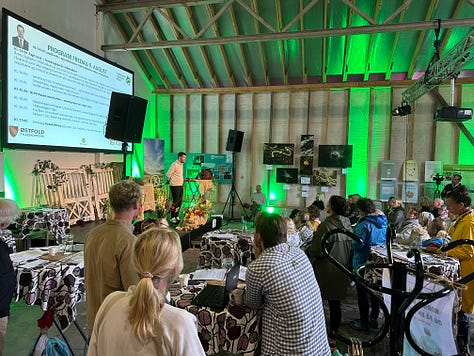
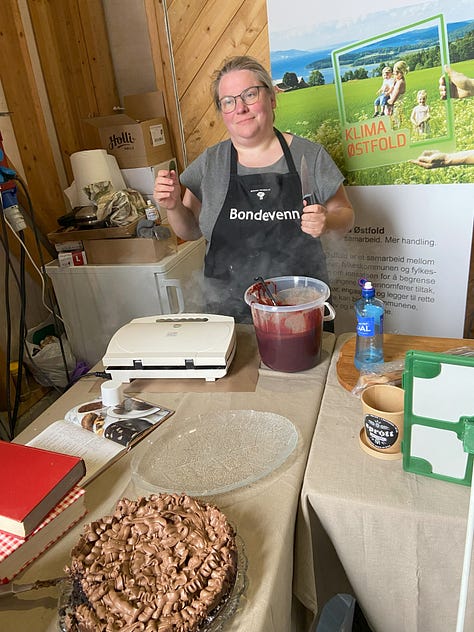
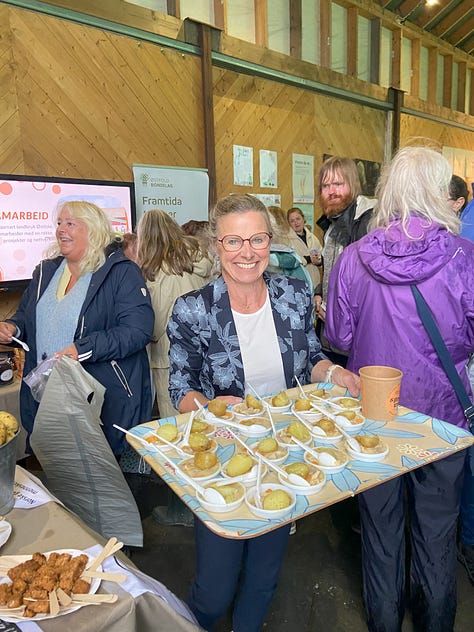
Our display consisted of four microscopes with living seedlings and lots of active microbes, and one stereo microscope with some compost and worms to view at lower magnification. We also had a screen with my soil life compilation video playing on a loop. We hung some of my artwork on the wall behind us and some on the opposite wall, with labels next to each one including QR codes linking to a write up about each piece on the blog section of my website.

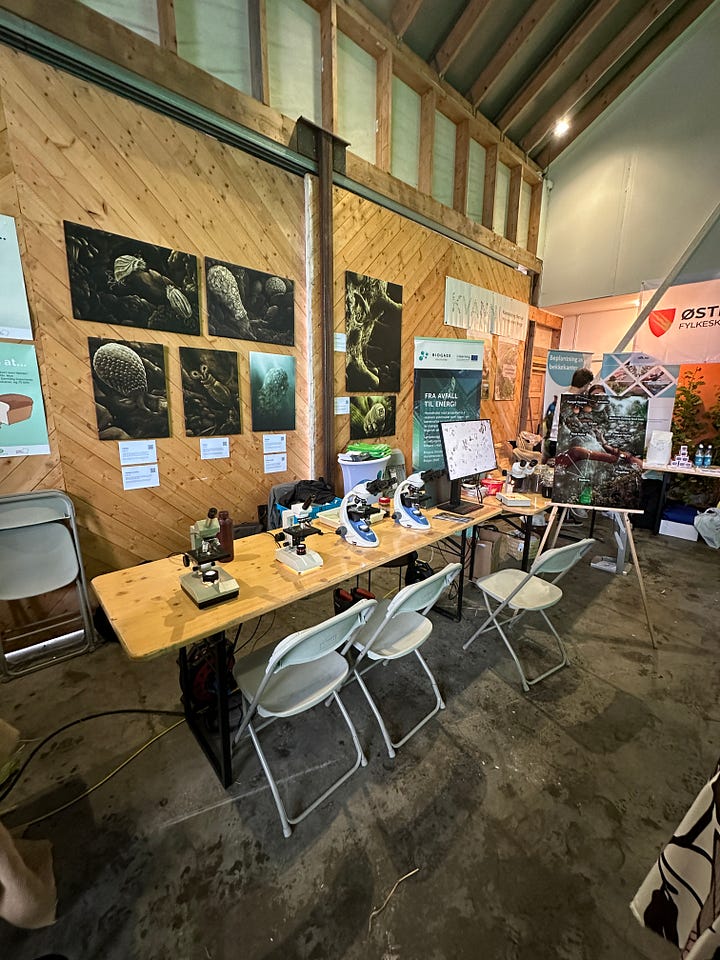
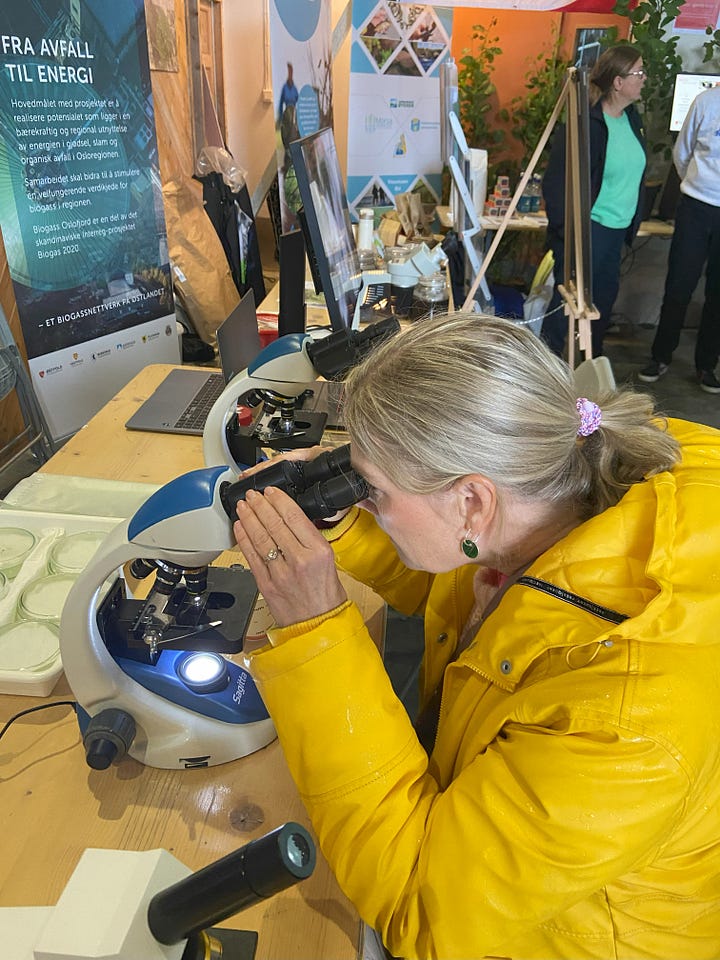
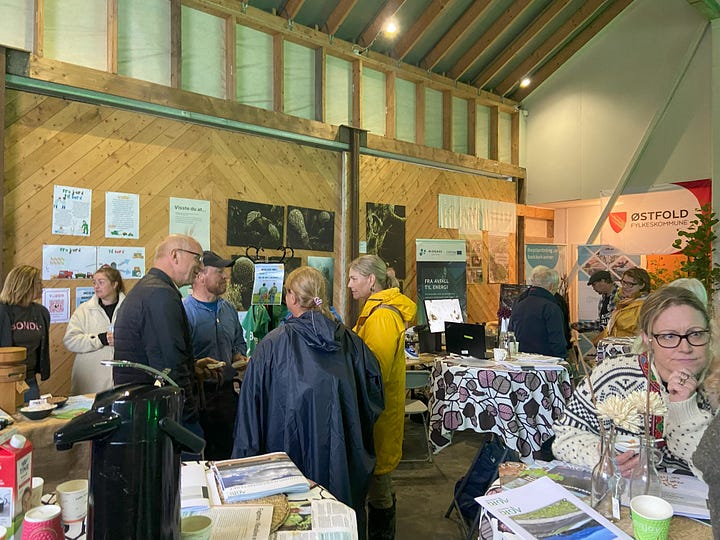
Visit the Klima Østfold website for a more complete overview of the Klimalåven projects, including the presentations and more pictures: Klima Østfold.
Here’s another site with a huge collection of photos from all across the event: r-a.no.
Presenting to a Diverse Audience
Most of the events I attend are conferences or conventions which are related to agriculture in some way, so participants are typically farmers, agricultural advisors, researchers, and other professionals. This fair was a large community event and fully open to the public, so visitors could be absolutely anyone.
This made it challenging to know how to introduce the display to each person who approached. I try to meet people where they are as much as I can, but in this setting there’s no way of knowing where someone is. One guest might be a dairy farmer, and the next might be a microbiologist, and the dairy farmer might be the one with more knowledge of soil microbes. Questions can be anything from “What is a cell?” to “Can you identify plants by their microbial communities?”.
I started by saying we have seedlings that have been living on microscope slides for a few weeks, and that they could look into the microscope to see microbes living in and around the roots. Then I would step back and give them a chance to look. If they haven’t asked any questions or made any kind of comments after a few moments I’ll check in and ask if they can see anything, which helps break the ice and opens the door for them to start asking questions, and they almost always do. Then I start explaining things based on what kind of questions they ask. This approach is more demanding for me than using a standard script, but it leads to many great conversations and genuine “aha” moments with visitors.
We also met plenty of parents with young children. I don’t know why anyone would put a toddler in front of a microscope, but they almost always do. Sometimes the kids are well behaved and the parents show interest in the display, but more often I’m watching like a hawk so the kid doesn’t pull a microscope off the table or put their mouth on it (I had to act fast when a toddler pulled the eyepiece out with his mouth at previous event), while the parents are distracted by their other kids, chatting to someone else, or looking at their phones. And this is typically happening at the same time as someone else is asking “What’s the point of rotifers?”
These events really keep me on my toes!
Lasting Impressions
My favourite moment from this event was with the very last group that approached as I was starting to pack up. It was a mother with three girls, one of whom was particularly confident and outspoken. When she first looked into the microscope and saw the protozoa swimming around the seedling root, she shouted “Æsj!” (an expression of disgust), but kept looking and started asking questions. She convinced the other girls to look too, and we had a lively discussion about how microbes are everywhere, how they keep us alive, make our farts, and build ecosystems.
After a while her mother and the other girls were ready to move on, but she was lost in fascination, staring at one of the seedlings on a slide in a sealed petri dish. She was so captivated by this new perspective of a plant that she couldn’t seem to pull herself away, so, after checking with her mother, I offered to let her take it home, and she was thrilled.
I showed her how to water the seedling, then dried some of the water away and let her do it herself. She paid close attention and did it perfectly on the first try, so I sealed the dish with parafilm to help keep it safe on the way home, and gave it to her. She cradled it like a special treasure, eyes full of wonder. I’m hoping she’ll get a chance to look at it in a microscope again when school starts.
We never know for sure what people take away from experiences like these, but every now and then I do feel like a lasting impression has been made. A sense of discovery in a positive setting can inspire both kids and adults to appreciate the natural world more deeply, and gain a new respect for its complexity. The ripple effect from even small moments like these can go far.
The Hangover
These events take a colossal amount of energy before, during, and even after they’re over. While I don’t feel nervous about them like I used to, there’s still a huge amount of planning and organizing involved, and it’s a major disruption to my daily routines. As a person with ADHD and social anxiety, I need a little extra space to cope with it all. So even if the event itself is only a day or two, I try to avoid any other major commitments in the two weeks before, and the week after, because I know there just won’t be room in my brain for much else.
Once I return home, there’s a final push to unload everything from the car and then I collapse like a bowl of jello, aching and utterly exhausted but at the same time feeling incredibly happy, proud, and grateful for the experience.
After a few days in a cocoon-like state it’s time to unpack and put things back in place, then return to work in the studio, usually with a fresh burst of inspiration.
Back to the Studio
It’s always surreal to see my own work on display in public places, and it was a huge honour to be trusted with this level of involvement in such a significant event.
I’m so grateful to my friend and former colleague Veronica Lilliehöök, along with event organizers Ida Marie Ruud Stemmedalen of Rakkestad Næringsråd and Charlotte Forsberg of Østfold Fylkeskommune for this incredible opportunity and experience.
Veronica and I were colleagues for a short time at VitalAnalyse until I left to focus on artwork, so this was a wonderful chance for us to reconnect, and we had a great time working together once again. I hope there will be more opportunities like this in future!
Now it’s time to settle back into the studio and focus on the next set of commissions, which I’ll hopefully be able to share more about soon.
Thank you so much for reading, and wish you all the best!
Kate

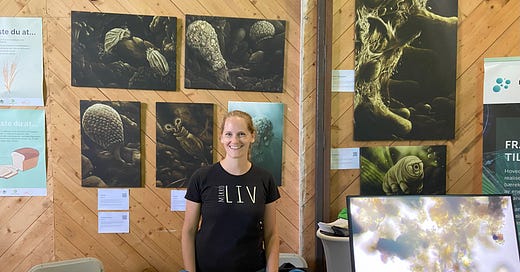



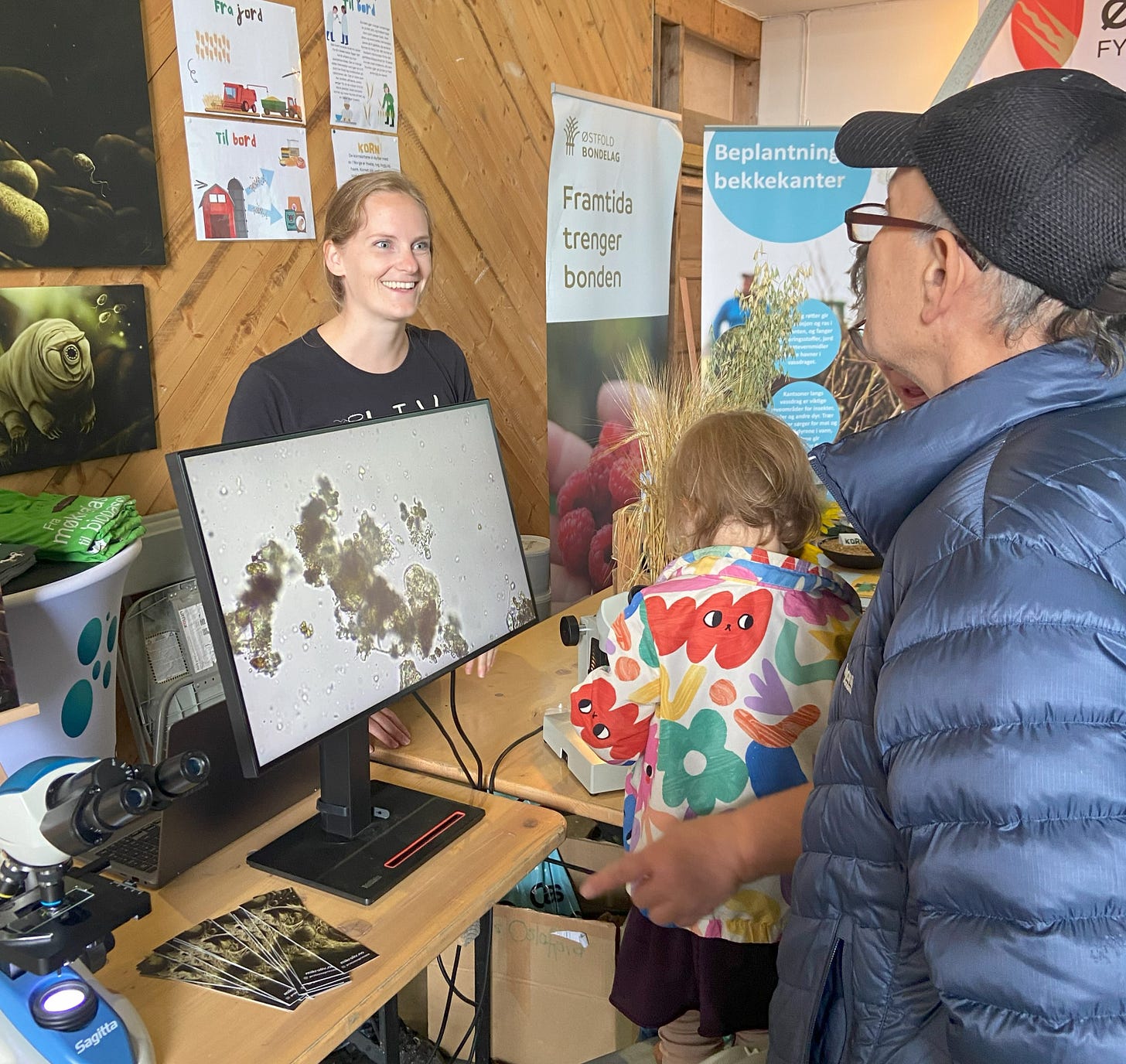


Such a fun read. Thanks for sharing. I love that drawing in the background with the testate amoeba. What a beauty!